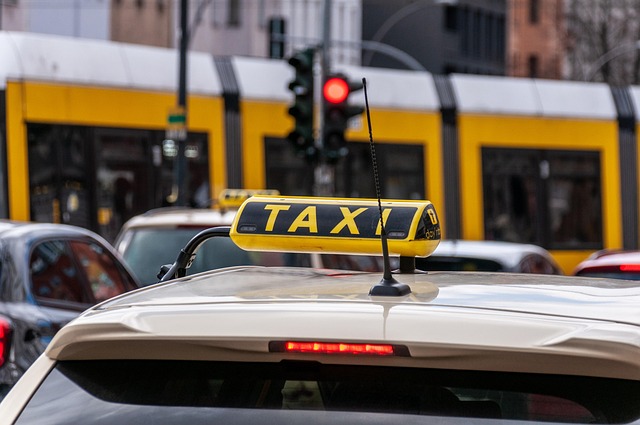Looking to register your car in California? This comprehensive guide will walk you through the process step-by-step. First, understand the state’s vehicle registration requirements, including necessary documents like proof of insurance and ownership. Next, gather these documents and visit your local DMV for a crucial dmv vin verification, ensuring your vehicle’s identification number is valid. After approval, complete the California car registration application form and pay the required fees to receive your license plate.
- Understand California Vehicle Registration Requirements
- Gather Necessary Documents for Car Registration
- Visit Your Local DMV for Vehicle Identification Number (VIN) Verification
- Complete the California Car Registration Application Form
- Pay the Required Registration Fees and Receive Your License Plate
Understand California Vehicle Registration Requirements

Before registering your car in California, it’s crucial to understand the state’s specific requirements for vehicle registration. The California Department of Motor Vehicles (DMV) mandates that all vehicles operating within the state be properly registered and have undergone a thorough inspection. This includes verifying the Vehicle Identification Number (VIN), which is a unique code that identifies your car. A mobile vin verifier or a similar service can facilitate this process by providing a convenient, on-site VIN inspection, ensuring your vehicle meets all necessary standards before registration.
During the registration process, you’ll need to present specific documents, including proof of insurance, a valid driver’s license, and the completed application form. Additionally, the DMV will conduct a background check and verify the VIN through a national database to ensure the vehicle is not stolen or has any outstanding issues. A mobile vin verification service can expedite this step by allowing for immediate and accurate VIN validation, making the registration process smoother and more efficient.
Gather Necessary Documents for Car Registration

Before you begin the registration process, make sure you have all the required documents ready. The California Department of Motor Vehicles (DMV) will need specific information and proof of ownership to complete your car’s registration. This includes gathering essential papers such as the vehicle’s title, a valid driver’s license or state ID card, and proof of insurance. Additionally, you’ll require a completed Vehicle Registration Application form, which can be obtained from the DMV website.
One crucial step is to undergo a DMV VIN verification process, where your vehicle identification number (VIN) is inspected and cross-referenced with their records to ensure the car’s authenticity and avoid any potential fraud. You can do this through a mobile VIN inspection service, making it more convenient for you. This step is vital to ensure a smooth registration experience.
Visit Your Local DMV for Vehicle Identification Number (VIN) Verification

Before you can register your car in California, you’ll need to ensure that your vehicle has a valid Vehicle Identification Number (VIN). One effective way to verify this is by visiting your local Department of Motor Vehicles (DMV) office. They offer VIN verification services that cross-check the number against their databases to confirm its authenticity. This step is crucial as it protects against potential fraud and ensures you’re registering a legitimate vehicle.
When you go for the VIN inspection, bring along all necessary documents related to ownership and any previous registration records. If you prefer a more convenient option, some services also provide mobile vin verification, allowing you to get this done from the comfort of your home or even while on the road. This modern approach streamlines the process, making it easier for California residents to register their vehicles without the hassle of waiting in DMV lines.
Complete the California Car Registration Application Form

To begin the registration process, you’ll need to complete the California Car Registration Application Form (Form DV-140). This form is your primary document for registering your vehicle with the California Department of Motor Vehicles (DMV). Make sure to fill it out accurately and completely. One crucial aspect of this process involves the DMV vin verification, which ensures that your vehicle’s unique identification number (VIN) matches the specifications on file.
You can conduct a VIN inspection yourself or opt for a mobile VIN verifier to streamline the process. Either way, having the correct VIN information is essential as it verifies ownership and helps in accurately registering your car. This step-by-step approach ensures that when you submit your application, everything aligns, leading to a smooth registration experience.
Pay the Required Registration Fees and Receive Your License Plate

After completing your vehicle’s registration application, the next step is to pay the required fees. California’s Department of Motor Vehicles (DMV) charges a standard fee for car registration, which may vary depending on your vehicle type and other factors. For example, the cost could differ for a new or used car, or if your vehicle has modified emissions controls. Alongside this fee, you’ll also need to pay for license plate fees, which cover the cost of issuance and renewal. Once all fees are settled, the DMV will process your application and issue your license plates. These plates display unique identifiers that are crucial for vehicle identification, including a Vehicle Identification Number (VIN).
To ensure smooth registration, consider using mobile VIN verification services to validate your vehicle’s history prior to visiting the DMV. A mobile VIN verifier can provide immediate insights into your car’s past, such as ownership records and accident history, saving you time during the registration process. This step is optional but recommended, especially when dealing with a used vehicle or new make/model.
Registering a car in California is a straightforward process once you understand the requirements. By gathering all necessary documents, undergoing DMV VIN verification, completing the registration application form, and paying the associated fees, you’ll be on your way to legally operating your vehicle. Remember to keep your registration up to date to avoid any penalties.
